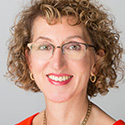11:08 PM
Transformation Expert
Bob Wilkes truly appreciates the adage, "Be careful what you wish for." When he joined San Francisco-based CSAA (California State Automobile Association, which is comprised of AAA of Northern California, Nevada and Utah) in 2002, Wilkes expected to draw on his success in running operations as varied as underwriting, call centers, claims and product management, first at Allstate and then at Viking Insurance (eventually acquired by Royal & SunAlliance). "I was probably an IT critic for most of that," he recalls. "I was always pushing for what was possible - how to drive more efficiencies into the organization using technology."
Wilkes got that opportunity - and more - when he took on joint responsibilities for running CSAA's IT and sales operations and, in 2003, assumed the new role of business transformation officer for what is the second-largest member group of the national AAA organization.
It was a welcome challenge, he emphasizes. "It was fun being able to drive efficiencies in the organization and provide better service."
Although CSAA had been outsourcing its IT operations for five years, "Our IT expense ratio was twice the industry average when I took over," Wilkes recalls. Even with the arrangement, CSAA had contracts with nearly 200 vendors, and "80 percent of our dollars were going to about 80 percent of the vendors - we had no real strategic partner or preferred provider."
All that has changed, though, thanks to Wilkes' efforts to not only manage expenses but also transform the entire IT culture at CSAA. "In 18 months, our expense ratios went down by almost 40 percent," he reports. "We provided more services, created an Internet presence and created more projects. It was really about transforming how IT did business - making choices about core competencies, what we needed to be world-class at and what we needed to manage."
Defining Values
At its core, the turnaround was the result of CSAA's "transformation to a values-based culture, creating a very articulated vision, then defining the values [and determining] how we would work together to accomplish that," says Wilkes. Under his direction, CSAA created a Business Transformation Office that encompasses IT, strategic planning, business process redesign and operational excellence; enterprise portfolio program management; and STAR, a multiyear program that involves replacing CSAA's core insurance and membership systems and related business processes, as well as adding CRM capabilities.
In conjunction with this was the implementation in 2003 of a concept Wilkes calls "social contracting," ultimately, "a commitment in how to make a relationship work," he notes. Concurrently, CSAA identified "what vendors were clearly the preferred provider, or at least the muscle," as Wilkes puts it. These include Chicago-based Accenture (for development and as CSAA's PeopleSoft preferred provider); EDS (Plano, Texas) for hosting and some systems integration; Armonk, N.Y.-based IBM (in an "on-demand" deal; the first initiative is a new compensation system that was scheduled to go live around Labor Day); and Steel Card (Santa Barbara, Calif.), whose technology is being used at the front end to enable CSAA agents to access legacy system data via a browser-based application.
Outsourcing is still part of the equation. "I have been a supporter of keeping the core competencies in the company, but outsourcing the commodity jobs," Wilkes says. "Thirty-five percent of our development work is offshore with Cognizant [Teaneck, N.J.], or through some offshore companies through EDS and Accenture. Being in the San Francisco area, IT salaries are about 30 percent higher than even in Los Angeles. To be competitive, we need ways to reduce those costs," he explains. For example, as part of CSAA's contract with EDS for desktop support, "We just saved about 20 to 25 percent by moving a call center from the Bay Area to Kentucky," Wilkes reports. "That's a great example of their financial stewardship."
For any kind of project, the Program Management Office teams with the Business Transformation Office to work with the "strategic sponsors" and business units that Wilkes' group supports. "We identify the portfolio we're going to invest for addressing the strategic initiatives," Wilkes says. "It's a nice path from strategies for the enterprise, to having an architecture group that designs the business processes and the culture that helps us get there, then making sure the dollars are invested correctly for the biggest bang for our buck over the next few years."
With the organizational transformation nearly complete, Wilkes and his team are focusing on CSAA's biggest challenge for the future: growth. With an existing 21 percent share of the market, he notes, "How do we grow our business? While we have the face-to-face market, there is probably another 30 percent of the market we are not even thought about in: direct and Internet."
So CSAA, which offers nearly 4 million members an array of automotive, travel, insurance and financial services, is revamping its distribution system to create a multichannel environment that can facilitate cross-selling. "We're adding a call center and Internet environment," Wilkes says. "Telephony strategy is key. IT's focus in 2005 will be to create a virtual call center, between field offices, call centers and the Internet." This will require "having IT people involved in business strategies and [helping them] see how telephony can integrate those three channels."
As Wilkes puts it, "I want our people helping the business understand what's possible: Get away from the 1 to 2 percent efficiency gains, and take the transformational thinking and make big 15 to 20 percent steps in improvement."
Katherine Burger is Editorial Director of Bank Systems & Technology and Insurance & Technology, members of UBM TechWeb's InformationWeek Financial Services. She assumed leadership of Bank Systems & Technology in 2003 and of Insurance & Technology in 1991. In addition to ... View Full Bio

























